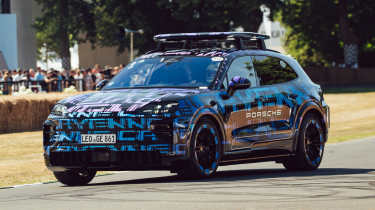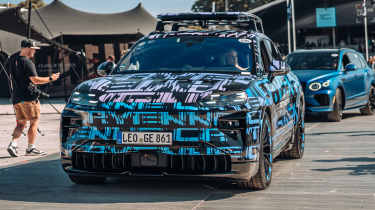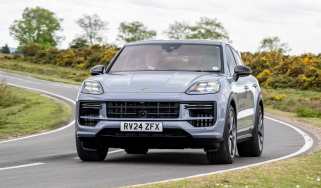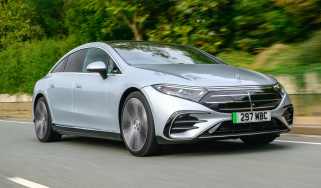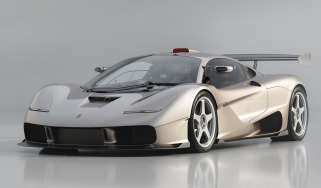Porsche Cayenne Electric nears production – prototype appears at Goodwood 2025
The next Porsche Cayenne is on the way, with the ultimate evo tow car getting an electric option
Porsche is soldiering on with its next-generation electric models, the firm wheeling out the thinly-disguised prototype of its E4 Cayenne at UK events. First appearing on the Shelsley Walsh hillclimb, the electric Porsche Cayenne has now been courting the spectators and livestream viewers at the Goodwood Festival of Speed. The question is, will people buy it or will it get a soft sales reception like the Macan EV, when it hits dealers in 2026?
Taking to the hill with Formula E test driver Gabriela Jílková at the wheel, the Cayenne made its runs in typically undramatic, electrically-powered silence wearing a thin but effective disguise to hide the finer design details.
What do we know about the next iteration of perhaps the ultimate evo tow car? Under the skin it’s expected to feature a comprehensively updated version of the 800-volt PPE platform that first underpinned the Macan EV, called K1. Like the Macan EV, the Cayenne EV is also expected to be sold alongside its internal combustion counterpart, rather than replacing it outright. Development for the existing petrol and hybrid models is far from over, with Porsche planning ‘major technical investment’ to ensure its internal combustion engined powertrains comply with future EU legislation and it offers a broad range of powertrains to appeal to as broad a customer base as possible.
We don’t know a huge amount about its tech specs yet but it ought to feature a larger battery and more powerful motors, spec for spec, than the Macan. For reference, Porsche’s smaller (but still 2220kg at its lightest) EV SUV features 95kW batteries across the range and gets 380 miles of range in Macan 4 form. Maximum charging rates could meet or exceed the 270kW speeds achieved by the Macan.
The first Cayenne EVs will, of course, be Cayenne ‘Turbo’ models. As per the Macan and, indeed, the Taycan’s release strategies, big power (more profitable) models come first, followed by the lower-spec versions with less performance and more range that are always the more sensible purchase.
> Best electric cars 2025 – great EVs from hot hatches to supercars
We don’t expect Porsche to be baited by the 905bhp Lotus Eletre R in this sense, so don’t expect the Cayenne Turbo to come with the Taycan Turbo GT’s frankly absurd twin-motor, 1020bhp output to ‘outdo’ the Lotus. Porsche’s hope is it’ll do that sales wise, which isn’t exactly a high bar to clear. Think of the Porsche Cayenne EV more as a sportier alternative to the BMW iX, instead.
Expect higher-spec versions of the Cayenne to come with an electronically controlled locking differential on the rear axle, as available on the Macan 4S and Turbo. Rear-wheel steering, air springs and PASM adaptive dampers will also form part of the chassis systems. Rear-wheel steering, air springs and PASM adaptive dampers will also form part of the chassis systems.
Design wise there’s really not a lot to say about the Cayenne Electric. It’s all but sure to take similar cues to the Macan and upside them. We see a blade-like solid rear light and wider, more bulbous light units at the front. Unlike the Macan, it doesn’t appear to have a ‘main’ light unit lower down, separate to the DRL units, instead utilising a more traditional integrated set-up.
The car could appear as early as IAA Mobility 2025 (the Frankfurt Motor Show) in September, though an independent reveal closer to the end of the year, or next year, is also possible.
